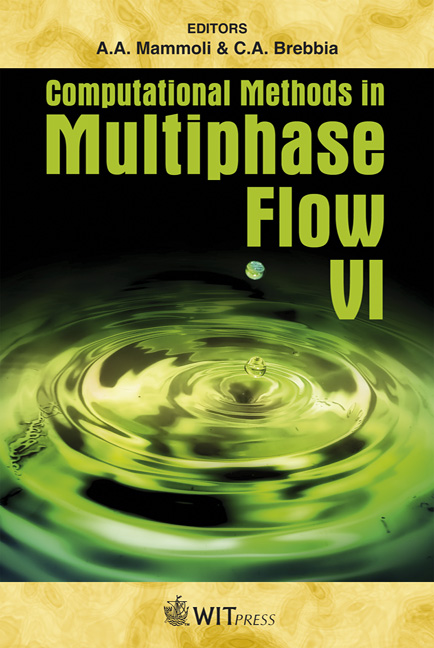Hybrid Density- And Pressure-based Splitting Scheme For Cavitating Flows Simulation
Price
Free (open access)
Transaction
Volume
70
Pages
16
Page Range
41 - 56
Published
2011
Size
804 kb
Paper DOI
10.2495/MPF110041
Copyright
WIT Press
Author(s)
T. Alexandrikova, A. Pavlov & V. Streltsov
Abstract
A new numerical method to simulate steady-state isothermal liquid flows with hydraulic cavitation is proposed. The 3D averaged N-S equations with Lam- Bremhorst κ – ε turbulence model are used. The barotropic state equation is developed basing on thermodynamic equilibrium relations. Simulation of such flows faces a lot of numerical difficulties concerned with variations of density, speed of sound and time scale. The method is a hybrid splitting scheme that is a mixture of \“density-based” and \“pressure-based” approaches. The splitting scheme is the \“pressure-based” SIMPLE-type algorithm in the region of incompressible liquid flow without cavitation. The scheme degenerates to the \“density-based” algorithm in a compressible region (2-phase state or pure gas). The proposed method differs from both \“density-based” preconditioned algorithms and SIMPLE-type methods adapted to the case of cavitating flows. The method has been tested on numerous typical 3D problems with hydraulic cavitation. Results of numerical simulation are in good agreement with experimental data. The algorithm shows high efficiency for the considered problems. The method has been implemented in FloEFDТМ. Keywords: cavitating flows, numerical method, splitting scheme. 1 Introduction A new numerical algorithm for simulation of cavitating flows is proposed in the paper. Cavitating flows are encountered in a wide range of applications playing mostly negative but sometimes positive role. We consider hydraulic cavitation
Keywords
cavitating flows, numerical method, splitting scheme





